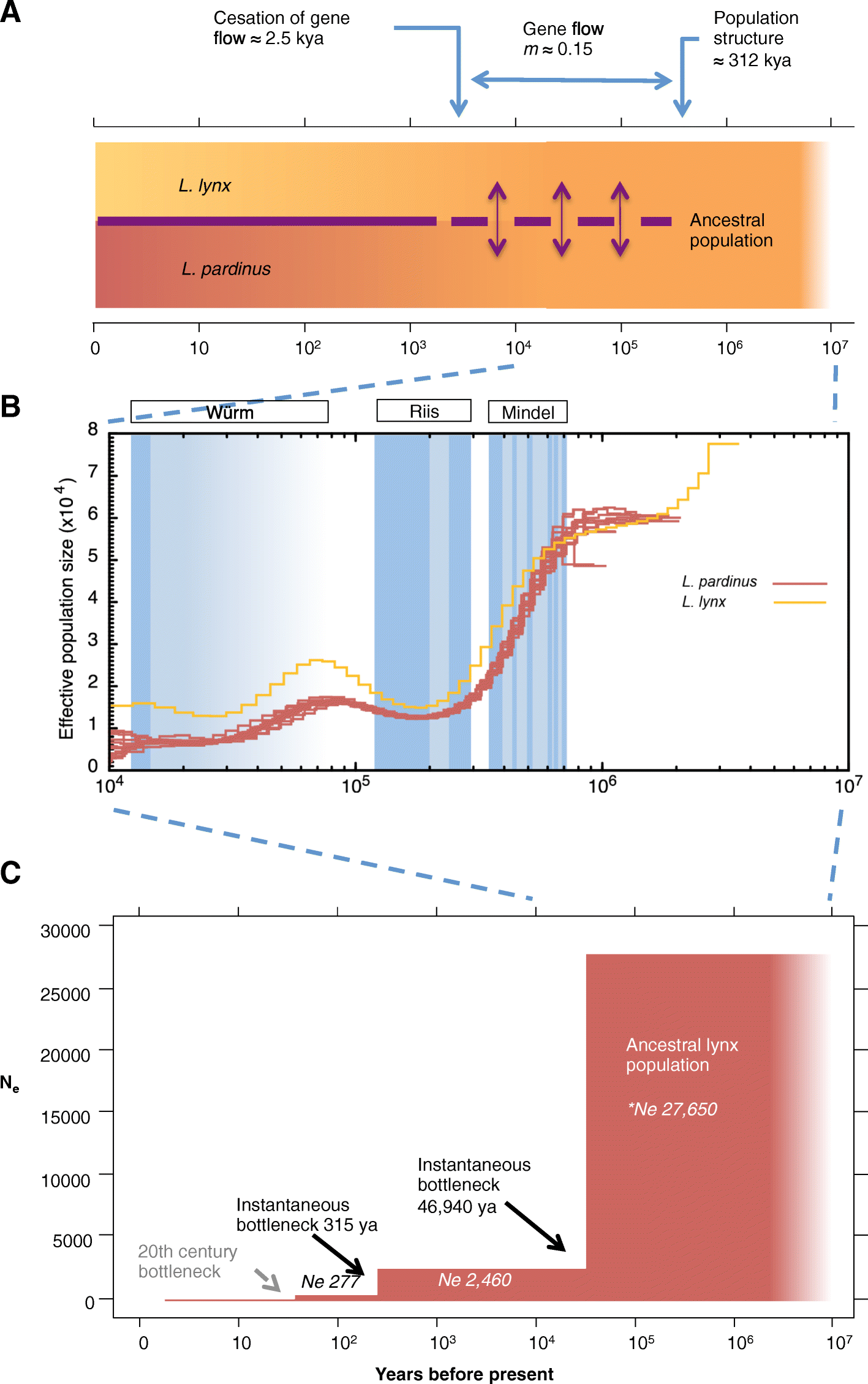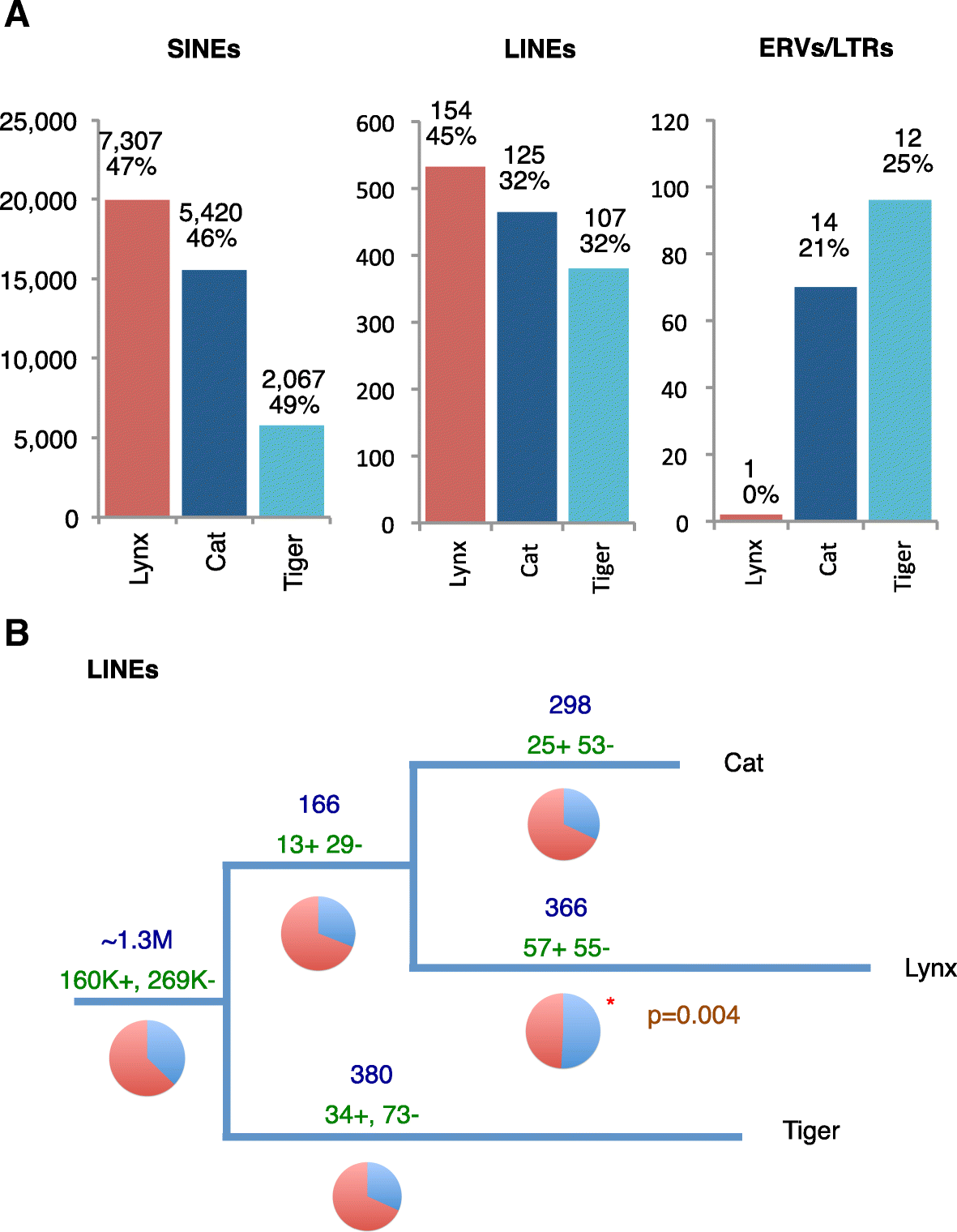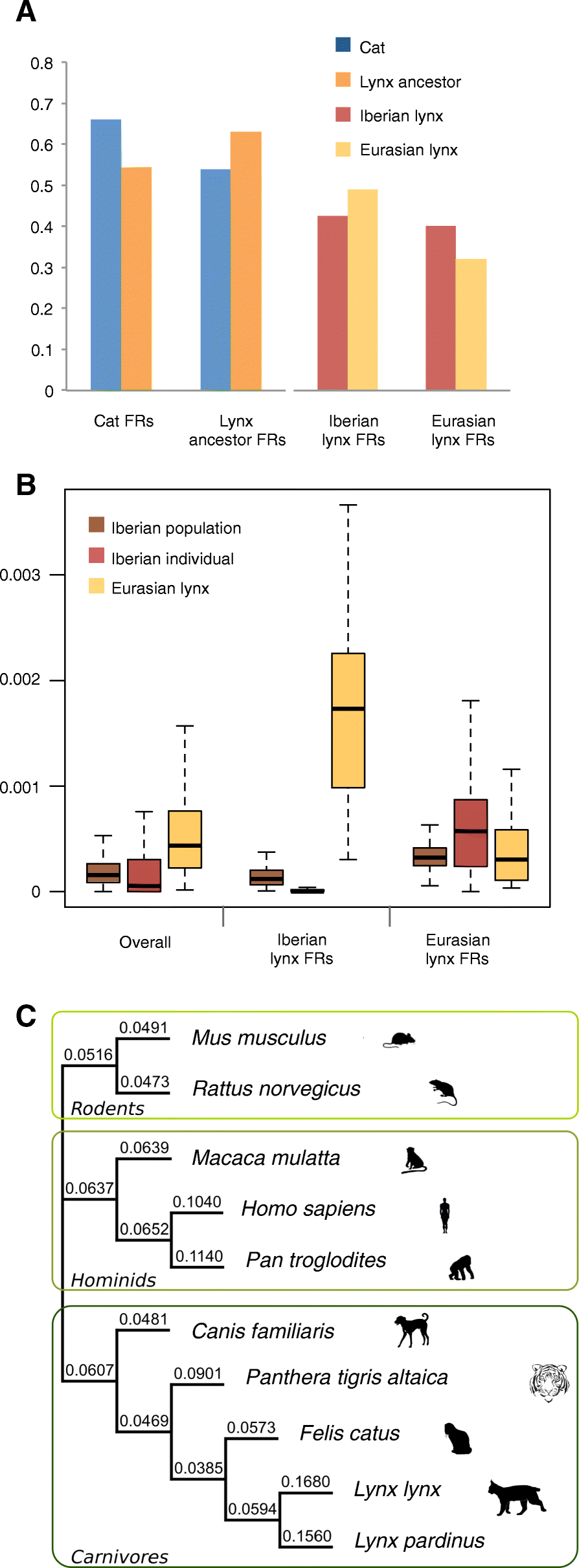Extreme genomic erosion after recurrent demographic bottlenecks in the highly endangered Iberian lynx
- PMID: 27964752
- PMCID: PMC5155386
- DOI: 10.1186/s13059-016-1090-1
Extreme genomic erosion after recurrent demographic bottlenecks in the highly endangered Iberian lynx
Abstract
Background: Genomic studies of endangered species provide insights into their evolution and demographic history, reveal patterns of genomic erosion that might limit their viability, and offer tools for their effective conservation. The Iberian lynx (Lynx pardinus) is the most endangered felid and a unique example of a species on the brink of extinction.
Results: We generate the first annotated draft of the Iberian lynx genome and carry out genome-based analyses of lynx demography, evolution, and population genetics. We identify a series of severe population bottlenecks in the history of the Iberian lynx that predate its known demographic decline during the 20th century and have greatly impacted its genome evolution. We observe drastically reduced rates of weak-to-strong substitutions associated with GC-biased gene conversion and increased rates of fixation of transposable elements. We also find multiple signatures of genetic erosion in the two remnant Iberian lynx populations, including a high frequency of potentially deleterious variants and substitutions, as well as the lowest genome-wide genetic diversity reported so far in any species.
Conclusions: The genomic features observed in the Iberian lynx genome may hamper short- and long-term viability through reduced fitness and adaptive potential. The knowledge and resources developed in this study will boost the research on felid evolution and conservation genomics and will benefit the ongoing conservation and management of this emblematic species.
Keywords: Conservation genomics; Genetic diversity; Genetic drift; Inbreeding; Lynx.
Figures




References
-
- WWF. Living Planet Report 2016. Risk and resilience in a new era. Gland: WWF International. 2016:p.145.
-
- Frankham R, Ballou JD, Briscoe DA. Introduction to conservation genetics. 2. New York: Cambridge University Press; 2010.
Publication types
MeSH terms
LinkOut - more resources
Full Text Sources
Other Literature Sources
Miscellaneous

